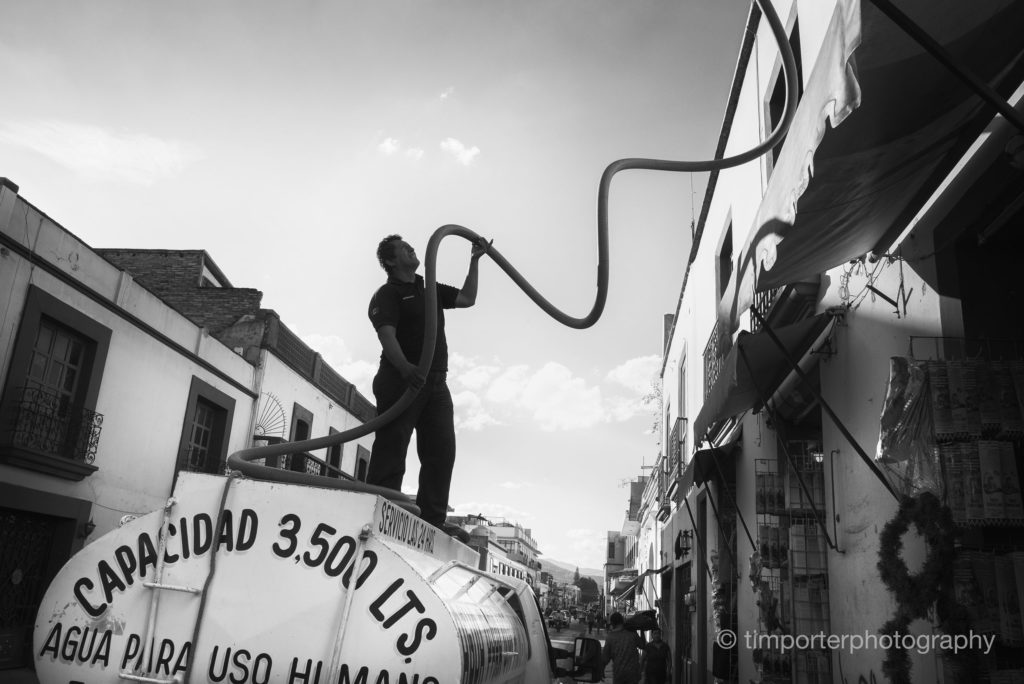
In the dry months, after the winter green fades and before the summer rains fall, the city thrums with the sounds of pipa trucks, ungainly vehicles whose oval tanks contain up to 10,000 liters of “water for human use.” Not for drinking, though. Not unless you enjoy a forced intestinal purge. For bathing and washing dishes and cleaning the cement patios.
Gas-powered pumps snort like un-muffled lawn mowers and push the water through corrugated rubber hoses into the cisterns of upscale homes, hotels, and trendy new businesses like French cafés and fusion restaurants that delight those willing to pay first-world prices in a third-world city.
Those without the money to buy thousands of liters, the working class and the poor, go without water for days when the city shuts off the tap. To drink and cook and bathe, they buy a 20-liter jug, a garrafón. Others drop buckets into deep wells and draw up undrinkable water, good enough for cleaning and boiling.
This is the conundrum: There is mescal that costs $10 a shot, there are hotels that charge $250 a night, there are iced frappuccinos from Starbucks, but there is not enough “agua para uso humano” to go around.
